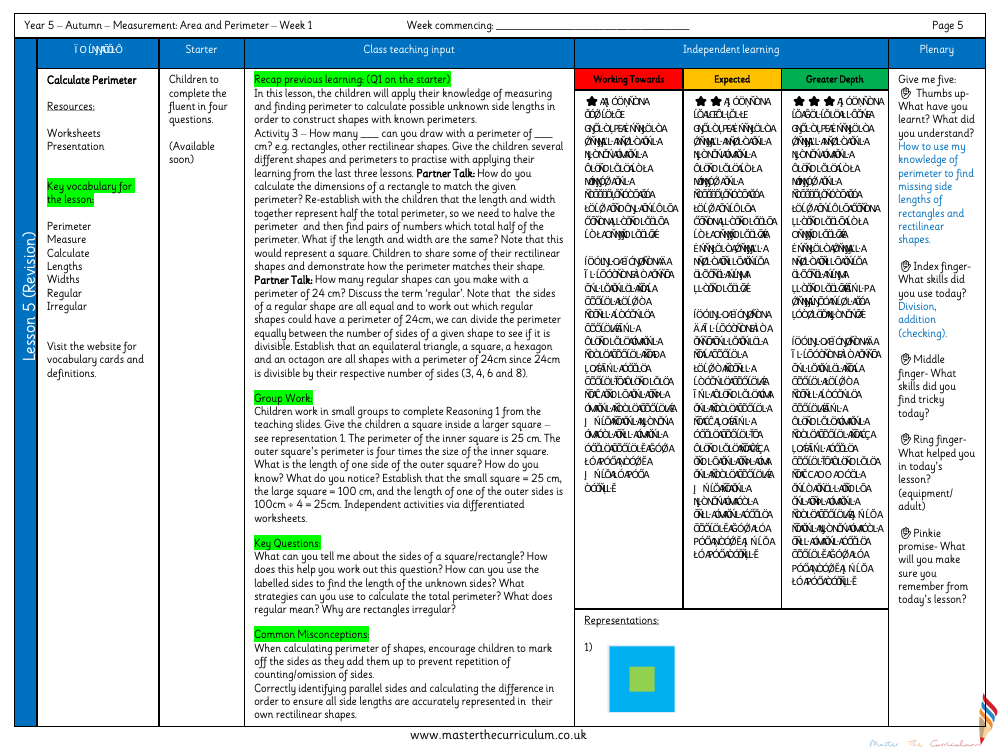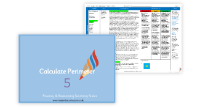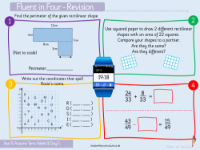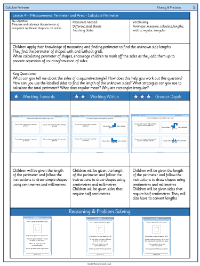Perimeter and Area - Calculate Perimeter - Planning

Maths Resource Description
In lesson 5, Year 5 students delve into the concept of calculating perimeters, applying their understanding of measurement to determine unknown side lengths and create shapes with specific perimeters. They are provided with worksheets and a presentation as resources, and are expected to become familiar with key terms such as 'perimeter,' 'measure,' 'calculate,' 'lengths,' 'widths,' 'regular,' and 'irregular.' The lesson kicks off with a starter activity that prompts students to complete 'fluent in four' questions, which will soon be available, and a recap of prior learning. The main activity challenges students to draw rectilinear shapes, like rectangles, with given perimeters, encouraging them to think critically about how dimensions relate to perimeter. They are guided to understand that the combined length and width of a rectangle is half its perimeter, which aids in determining the dimensions for a given perimeter. The concept of regular shapes, such as equilateral triangles, squares, hexagons, and octagons, is also explored by dividing the perimeter by the number of sides to find shapes that can be constructed with a perimeter of 24 cm.
During group work, students tackle reasoning problems, such as determining the side length of a square within a larger square based on given perimeters. Differentiated worksheets support independent learning, and key questions prompt students to consider the properties of squares and rectangles and how these can help find unknown lengths. They are encouraged to use strategies to calculate total perimeter and understand why rectangles are considered irregular shapes. The lesson aims to correct common misconceptions, such as the repetition or omission of sides when calculating perimeter. The 'Give me five' plenary allows students to reflect on their learning, including their understanding of perimeter, skills used, and any challenges faced. The lesson is structured to cater to various levels of understanding, from 'working towards' to 'greater depth,' with activities designed to build fluency, problem-solving, and reasoning skills, including the use of centimetres, millimetres, and half centimetres, as well as length conversions.




